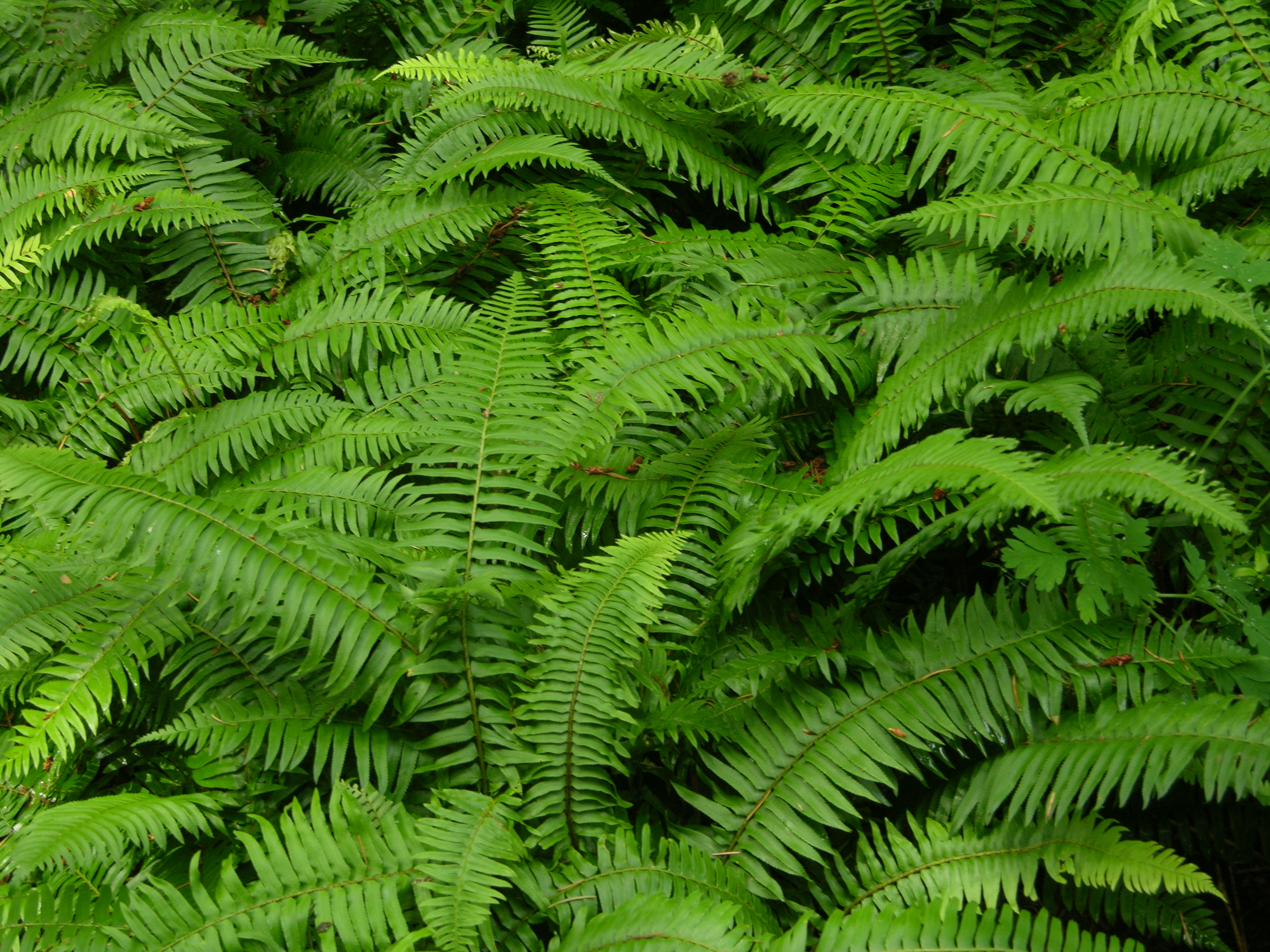As a relatively new student on campus, I am still learning all that Cascadia and UW Bothell have to offer. I am constantly surprised by things I had never noticed before, and I enjoy learning more about these discoveries. One thing I noticed on my first day here however, was the stunning variety of native plants that could be found all over campus. The sheer amount of native plants truly surprised me, and so I was excited to share them by making them the topic of my first blog post!
Sword Fern

Probably the most common kind of fern found on campus, this spiky fern gets its name from the shape of its blade-like fronds. The sword fern’s scientific name is Polystichum munitum, with Polystichum meaning “many rows” and referring to the arrangement of the spore clusters on the underside of the fronds, and Munitum meaning “armed with teeth”, referring to the fern’s dramatically pointed fronds. Both abundant and vibrant, it can grow up to three feet tall, and almost four feet in diameter! As to where to look for it on campus, these plants are spread out all over campus, and can be spotted in any of the planters, as well as lining most walkways.
Douglas Fir

These arboreal giants are notable for their fragrant needles, which is probably one of the reasons they are also one of the most common tree varieties used as Christmas trees! Commonly growing as high as 120 feet tall, the tallest recorded Douglas fir was measured to be 326 feet! These trees line the western edge of campus, and can be best seen from the first and second floors of the library, as well as from the walkway along the west side of campus.
Western Red Cedar

Western red cedar is another common tree found in the Pacific Northwest. Growing mostly in damp soil, these trees often play the role of canopy-creators in some of our native forests by branching out and creating the highest layer of the forest. Also important to note is how this tree played an especially important role in the lives of the Native Peoples of the Pacific Northwest. The bark was used in everything from clothing to baskets, while the long-lasting wood itself was turned into canoes, houses, and totem poles!
Pacific Rhododendrons

The Pacific rhododendron is a popular flowering bush, which can grow up to an astounding 25 feet tall, and 15 feet wide! This plant has been a long term favorite with gardeners in the Pacific Northwest due to its striking, brightly colored flowers and dark leaves, as well as its preference for moist climates and relative lack of sunlight. This plant can be found on campus past the W-sculpture, on the way to the parking garage. A fun fact about this plant is that it is the state flower of Washington!
Oso Berries

Named for the town of Oso, this colorful, flowering woody bush is a spectacular sight year round. From fiery hued leaves in the fall, to deep purple berries in the winter, white blossoms in the spring, and finally vivid green leaves in the summer, this plant is a staple of Pacific Northwest forests. Often a popular choice for bouquets and floral arrangements, this diverse plant is a showstopper no matter the season! Found mostly in the lower wetlands on campus, they can also be spotted along the paths around the sports fields.
Oregon Grape

Contrary to this plant’s name, the Oregon grape is not related to the grapes we all know and love, but instead is named as such because of the berries it sports in the summer that resemble grapes. These berries are actually edible, and are said to have tart flavor. This plant can be spotted in in garden beds near the Food For Thought Cafe, as well as near pathways all over campus.
Salal

Similar looking to Oregon grape, the salal plant is a cornerstone of the Pacific Northwest ecosystem. Salal grows mostly in well-shaded areas, where it can reach up to six feet in height. The plant’s dark berries and unassuming size may make it seem easy to dismiss, but this plant is truly a star of any Washington garden. Around campus, salal can be spotted underneath some of the cedar trees lining the upper parking lot.
Sources:
Hansen, Wallace W. “Gaultheria Shallon (Salal).” The Wild Garden: Hansen’s Northwest Native Plant Database,
Retrieved from www.nwplants.com/business/catalog/gau_sha.html.
Hansen, Wallace W. “Oemleria Cerasiformis (Indian Plum, Oso Berry, Bird Cherry, Skunk Bush).” The Wild Garden: Hansen’s Northwest Native Plant Database,
Retrieved from www.nwplants.com/business/catalog/oem_cer.html.
Hansen, Wallace W. “Polystichum Munitum.” The Wild Garden: Hansen’s Northwest Native Plant Database,
Retrieved from www.nwplants.com/business/catalog/pol_mun.html.
Hansen, Wallace W. “Thuja Plicata (Western Redcedar, Giant Arborvitae).” The Wild Garden: Hansen’s Northwest Native Plant Database,
Retrieved from www.nwplants.com/business/catalog/thu_pli.html.
Lang, Frank A. “Oregon Grape.” The Oregon Encyclopedia,
Retrieved from oregonencyclopedia.org/articles/oregon_grape/#.XJLWwaR7mHs.
“Plant Database.” Lady Bird Johnson Wildflower Center – The University of Texas at Austin,
Retrieved from www.wildflower.org/plants/result.php?id_plant=rhma3.
“Pseudotsuga Menziesii (Mirb.) Franco Douglas-Fir .” Plants Profile for Pseudotsuga Menziesii (Douglas-Fir),
Retrieved from plants.usda.gov/core/profile?symbol=PSME.